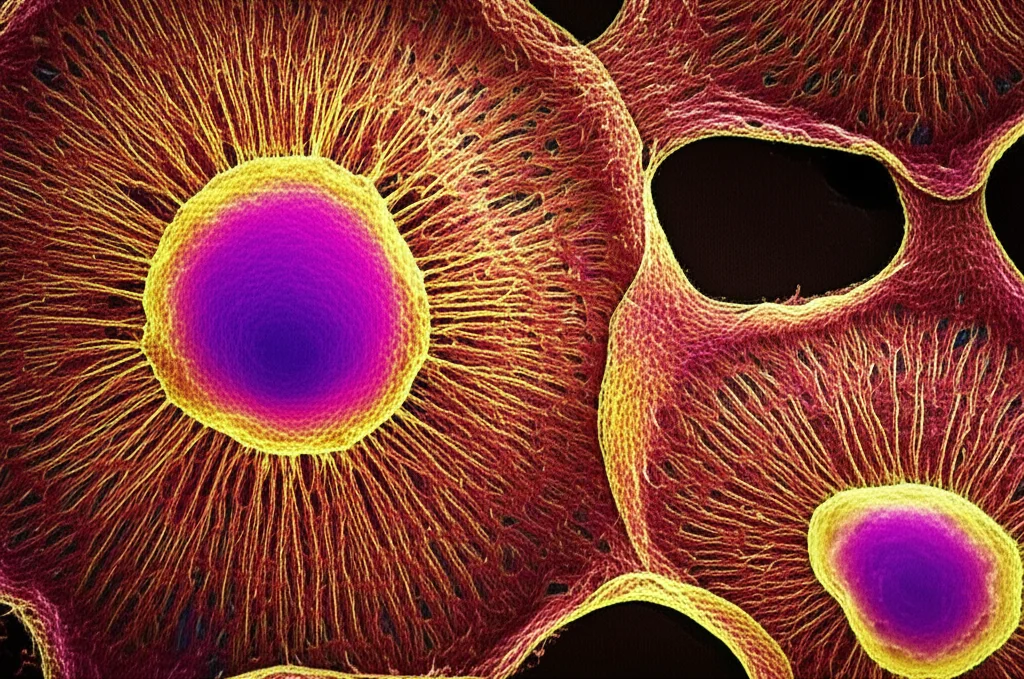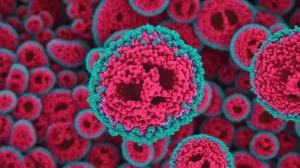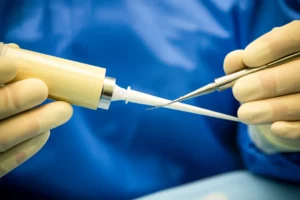Decoding Dental Stem Cells: The Surprising Role of IL-6
Hey there! Ever wonder what makes our bodies tick, especially in places you might not think about much, like our teeth? Well, I recently took a deep dive into the fascinating world of tiny biological messengers called cytokines, specifically one called Interleukin-6, or IL-6 for short. And let me tell you, its role in guiding the incredible stem cells found in our dental tissues is pretty mind-blowing!
Think of IL-6 as a molecular maestro. It’s a protein that can wear two hats – sometimes it’s cheering on inflammation (like when your body is fighting off an infection), and sometimes it’s trying to calm things down and help with repair. It’s involved in *so* many things, from how our immune system works to keeping our bones healthy. It’s secreted by a whole bunch of different cells all over the body.
But what about those amazing dental stem cells? You know, the ones tucked away in places like dental pulp (the soft stuff inside your tooth) or the periodontal ligament (which holds your tooth in place)? These little guys are like biological blank slates, with the potential to turn into different types of cells, which is super exciting for fixing damaged tissues. So, naturally, I was curious: what does this versatile IL-6 molecule do when it interacts with *them*?
The Great Literature Hunt
To figure this out, I looked at a scoping review – which is basically like sending out a search party through tons of scientific papers to see what’s already known on a specific topic. The researchers behind this review scoured major databases like PubMed and Scopus, looking for studies where scientists specifically messed with IL-6 levels (added it, boosted its production, or blocked it) and watched what happened to dental stem cells.
They started with over 300 articles, which sounds like a lot of reading! But after carefully checking titles and abstracts, and then reading the full text of the promising ones, they narrowed it down to 14 studies that really fit the bill. These were original research papers, written in English, focusing on how IL-6 affects dental stem cells.
IL-6: More Than Just Inflammation
Before we get into the dental details, it’s worth understanding *how* IL-6 talks to cells. It’s not just shouting instructions; it uses a complex system involving receptors on the cell surface. IL-6 binds to its receptor, and this pair then hooks up with another protein called gp130. This whole complex then kicks off a chain reaction *inside* the cell, activating different “signalling pathways.”
The main pathways involved are called JAK/STAT, MAPK, and PI3K/Akt. Think of these as different internal phone lines or communication networks within the cell. When IL-6 activates them, they send messages to the cell’s nucleus, telling it what genes to turn on or off, ultimately influencing the cell’s behaviour. There’s even a cool “trans-signalling” method where a soluble version of the receptor floats around and can activate cells that don’t even have the standard receptor on their surface! It’s pretty intricate stuff.
IL-6’s General Influence on Stem Cells
We know IL-6 is a big player in the world of stem cells in general, not just dental ones. For mesenchymal stem cells (MSCs), which are found in various tissues like bone marrow and fat, IL-6 can influence things like:
- Keeping them alive and healthy
- Helping them grow (though studies are a bit mixed on this!)
- Guiding them to turn into different cell types (like bone, fat, or cartilage)
- Helping them move around (migration)
- Modulating the immune system around them
It even seems to play a role in keeping some pluripotent stem cells (the really early, versatile ones) in their “stemmy” state, similar to another important factor called LIF. So, clearly, IL-6 is a significant modulator in the stem cell universe.

Focusing on Dental Stem Cells: The Nitty-Gritty
Okay, now let’s zoom in on our dental buddies. The review looked at studies on stem cells from different dental sources, including:
- Stem cells isolated from human exfoliated deciduous teeth (SHEDs – think wobbly baby teeth!)
- Dental pulp stem cells (DPSCs)
- Periodontal ligament stem cells (PDLSCs)
It turns out IL-6 has some specific tricks up its sleeve when it comes to these cells.
Stemness and Proliferation in Dental Stem Cells
One cool finding is that IL-6 seems to help dental stem cells, particularly SHEDs, hold onto their “stemness.” This means it helps them keep that valuable ability to turn into different cell types later on. Studies showed that adding IL-6 increased the expression of markers that scientists use to identify pluripotent and mesenchymal stem cells. This is a big deal because being able to keep stem cells “stemmy” in the lab is crucial for using them in therapies.
However, when it comes to making dental stem cells *grow* or proliferate, the picture is a bit less clear. Several studies on SHEDs, PDLSCs, and DPSCs found that IL-6 didn’t significantly change how fast these cells multiplied. This is interesting because IL-6 *can* boost proliferation in MSCs from other parts of the body. It just goes to show that stem cells from different tissues can respond differently!
Differentiation: A Mixed Bag for Dental Stem Cells
Now, let’s talk about differentiation – the process where stem cells mature and become specialized cells like bone cells, nerve cells, or fat cells. This is where IL-6 gets really interesting, and sometimes, a little confusing, depending on the type of dental stem cell and what kind of cell they’re trying to become.
For turning into bone cells (osteogenic differentiation), the results are mostly positive. Studies showed that IL-6 often *promoted* bone formation markers and mineral deposition in SHEDs, DPSCs, and PDLSCs. It seems to work through pathways like the Wnt pathway in PDLSCs. However, one study on DPSCs reported the *opposite* effect, where IL-6 actually *inhibited* bone differentiation. See? A bit confusing!
What about becoming nerve cells (neurogenic differentiation)? Here, the results are also mixed. One study found IL-6 had no effect on SHEDs, while another reported that it *inhibited* neurogenic differentiation in DPSCs.
And fat cells (adipogenic differentiation)? Again, different results depending on the source. No effect on SHEDs, but inhibition of fat differentiation in DPSCs.
Finally, cartilage cells (chondrogenic differentiation)? One study suggested IL-6 inhibited this in DPSCs.
So, it seems IL-6’s influence on differentiation is highly dependent on *which* dental stem cell you’re looking at (SHED, DPSC, PDLSC), and *what* you’re trying to make it turn into. The environment and experimental setup also play a big role in these inconsistencies.

IL-6 and Tissue Repair in the Mouth
Beyond just guiding stem cells, IL-6 is also important for the overall healing process, including in the mouth. It helps bring in immune cells, promotes the formation of new blood vessels (angiogenesis – crucial for getting nutrients to healing tissue), and influences how the scaffolding around cells (the extracellular matrix) is built and broken down.
For example, IL-6 can enhance the activity of enzymes that break down the extracellular matrix in dental pulp cells, which is part of tissue remodelling during repair. It also helps fibroblasts (cells that make connective tissue) produce collagen, a key component of healthy tissue.
Interestingly, some natural compounds like curcumin and ascorbic acid (Vitamin C) can help reduce inflammation and IL-6 levels in dental pulp stem cells, potentially aiding regeneration by creating a better environment for the cells.

The Clinical Promise: What This Means for Your Smile
So, why should we care about IL-6 and dental stem cells? Well, understanding this relationship opens up exciting possibilities for regenerative dentistry.
Imagine being able to use IL-6 to boost bone regeneration for things like fixing jawbone defects, treating severe gum disease (periodontitis), or helping dental implants integrate better with the bone. Since IL-6 seems to promote bone formation in many dental stem cell types, it could be a valuable tool.
Its ability to help dental stem cells maintain their “stemness” in the lab is also huge. This means scientists could potentially grow larger numbers of these powerful cells for therapies without them losing their potential to differentiate later. This could improve the success rates of stem cell-based treatments.
Furthermore, IL-6’s role in wound healing and modulating the immune response could be leveraged. For instance, in vital pulp therapy (trying to save a damaged tooth pulp), delivering IL-6 might help the pulp heal better and reduce inflammation. It could also potentially improve the success of transplanting dental tissues or cells.
While the research is still mostly preclinical (meaning it’s happening in labs, not yet widely used in humans), these findings lay the groundwork for developing new IL-6-based strategies to repair and regenerate dental tissues.

Wrapping Up: The Complexity and Future
So, what’s the takeaway? IL-6 is definitely a key player in regulating dental tissue-derived mesenchymal stem cells. It influences their ability to stay stemmy, how they differentiate into different cell types, and potentially their role in tissue repair and immune responses. The main ways it does this are through those JAK/STAT, MAPK, and PI3K pathways we talked about.
However, as we saw with the differentiation story, the results across different studies aren’t always perfectly aligned. This inconsistency is likely due to differences in:
- Where the stem cells came from (baby teeth vs. adult pulp vs. ligament)
- What stage of differentiation the cells were in
- How the cells were grown in the lab (culture conditions)
- The specific details of the experiments
This tells us that while we’ve pulled back the curtain a bit on IL-6’s role, there’s still more to learn. Future research needs to dive deeper into the exact molecular mechanisms at play and figure out how to navigate these inconsistencies. Fully understanding this complex relationship could pave the way for some truly exciting IL-6-based therapies in regenerative dentistry. It’s a complex puzzle, but one that holds incredible promise for keeping our smiles healthy!
Source: Springer







